Jess Hendon, Managing Editor Cochrane Common Mental Disorders reflects on the responsibility and challenges faced when using images to communicate mental health research findings, with practical insight from two graphic designers the Group have worked with Laura Evans, Creative Director, Nifty Fox Creative and freelance art director, graphic designer and model maker Annina Diston. This blog is one of several in our special series on children and young people’s mental health, #YoungMindsMatter.
Through this blog we want to open up this discussion and explore with you how we should use images in a responsible, authentic and innovative way, both in our Cochrane Review Group and more broadly in mental health research.
Page last reviewed 31 March 2022
Take-home points
Part of my role as a Managing Editor of a Cochrane Review Group is helping to share the evidence from our Cochrane ReviewsCochrane Reviews are systematic reviews. In systematic reviews we search for and summarize studies that answer a specific research question (e.g. is paracetamol effective and safe for treating back pain?). The studies are identified, assessed, and summarized by using a systematic and predefined approach. They inform recommendations for healthcare and research. by creating a range of products for social media. In reality, this means I moonlight as a communications expert for the Group. Like many people, I love to secretly waste my personal time casually addicted to various social media platforms. I don’t kid myself that this has somehow made me a seasoned communications professional rather than your average middle aged social media addict. Yet here I am with a feeling of tremendous responsibility that I need to help make sure the findings of our Group’s Cochrane evidenceCochrane Reviews are systematic reviews. In systematic reviews we search for and summarize studies that answer a specific research question (e.g. is paracetamol effective and safe for treating back pain?). The studies are identified, assessed, and summarized by using a systematic and predefined approach. They inform recommendations for healthcare and research. are communicated in a way that they will be understood and used by the people who can make a difference – especially after the hours of effort that have gone into producing a Cochrane Review! It is this aspect of the job that brings up a continual worry about what sort of images we should use to communicate about findings.
Given that we are all bombarded by information in an extraordinary and seemingly exponential way, we see it as essential to use images or visuals as a way of helping our evidence stand out, catching the attention of people who might find it useful in making decisions relating to mental health. Intuitively it feels like it should be simple; find a nice representative image and tweet. But the reality feels much more complicated.
Sarah Chapman has previously reflected on the power of the picture and the problem with stock images and sometimes it feels like all of the issues that come with choosing the right image are amplified when working in the area of mental health. Society is starting to recognise the pressing need to challenge mental health discrimination. There is a push quite rightly to change the narrative and move away from the clichéd ‘headclutcher’ photos of someone with head in hands.
What images are the right images?
Many of our Cochrane Reviews focus on interventions that treat some of the debilitating symptoms that people experience when they are in mental health distress. Are we underplaying the importance of the condition and the value of the research evidence if we use images that don’t reflect how people have experienced these symptoms? We also need to be careful the image doesn’t inadvertently exaggerate the benefits or harms of the treatmentSomething done with the aim of improving health or relieving suffering. For example, medicines, surgery, psychological and physical therapies, diet and exercise changes. the review investigates. Are more positive images of mental health that focus on prevention and recovery always the most appropriate images to use?
I get to work in partnership with authors, designers, people with lived experience, communications professionals, a varied group of people who bring a depth of perspectives to what we do. This variety of views is also where it gets more complicated. Images and the feelings and the emotions they evoke are personal and complex. People’s own experience of mental health and mental health problems is also unique.
Lived experience influences our perspective
My own lived experience of mental health problems colours my judgement on the images we use and leaves me conflicted. A good photograph can be a window that shows you something hidden beyond. For me, a picture depicting isolation and loneliness, sometimes criticised for being clichéd, gives a true sense of the crippling self-doubt and exhausting worrying my anxiety can layer upon me. I also feel a sense of sadness that nobody sees my version of adolescence growing up in a house consumed by a parent’s depression. Happy family pictures in this context would have felt alienating to me and served to compound the sense of shame I felt about my own reality. That said I really understand the need to portray hope and recovery which are also an important part of the reality.
Our images mustn’t act as triggers
There are so many important issues to consider when selecting images in the context of mental health problems. Sometimes we are so busy correcting one aspect we completely miss something that on reflection is obvious. Our colleagues who work in suicide and self-harm research are acutely aware of the risks associated with certain images acting as triggers for people. There are guidelines about responsible reporting in the area of suicide prevention and mental ill-health that we can draw on to try to ensure that our images and descriptions don’t trigger people, and instil a sense of hope about recovery.
I feel a tremendous responsibility to find and develop visuals that represent the many different/varied versions of people’s experience of mental health problems and not a corporate or clichéd version. We certainly don’t want to compound mental health stigma or use images that can act as triggers. We also recognise that there will be a huge range of views about how things are visualised.
Illustrating your own experiences of mental health
Many people use art and illustration as a way of expressing their own experience of mental health. Self-portraits can be particularly moving and haunting in this context. There is so much incredible work out there, we would be wise to explore how we can work in partnership with illustrators, artists and designers with lived experience more in the future. In January, as part of a patient and public involvement project with our Group, Karen Morley powerfully illustrated her experience of obsessive compulsive disorder (OCD):
“I made this image to illustrate my initial indiscriminate internet searches for information about my OCD. It’s authentic: my feeling at the time was that I was drowning in a sea of confusion and misinformation. It wasn’t so much ‘surfing’ as plunging into the great Pacific garbage patch. When I drew this I tried to incorporate some humour. I was very distressed by some of my early searches, and recalling them wasn’t comfortable. I hoped a little light heartedness might distance me and my viewers from the painful emotions accounts of mental health conditions can evoke.”
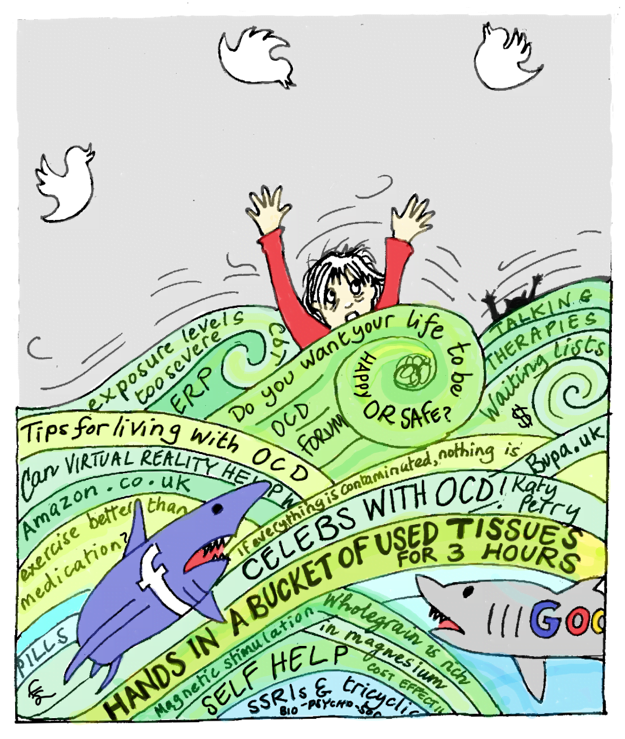
Karen has also written a powerful blog about her experience of seeking help for OCD.
Different images for different groups of people
One thing that is really important to us, is also particularly relevant to this special blog series, what kind of images work for our youth audience? Our Group’s Coordinating Editor and Child and Youth Psychologist, Sarah Hetrick has worked with young people to explore this:
“It is so important to ensure we incorporate youth views in all the work we do, including how we communicate the findings of our work. Young people have a huge range of varied experience and we must be genuine in our efforts to ensure we include those whose voice is typically not heard. Young people we have worked with have told us that they prefer clean simple graphics and don’t like to focus on the negative. We also know that minority groups often don’t see themselves represented in mass media, or only represented in negative ways. So, it is also essential we think about ensuring we don’t reinforce biasAny factor, recognised or not, that distorts the findings of a study. For example, reporting bias is a type of bias that occurs when researchers, or others (e.g. drug companies) choose not report or publish the results of a study, or do not provide full information about a study. and discrimination when we select images.”
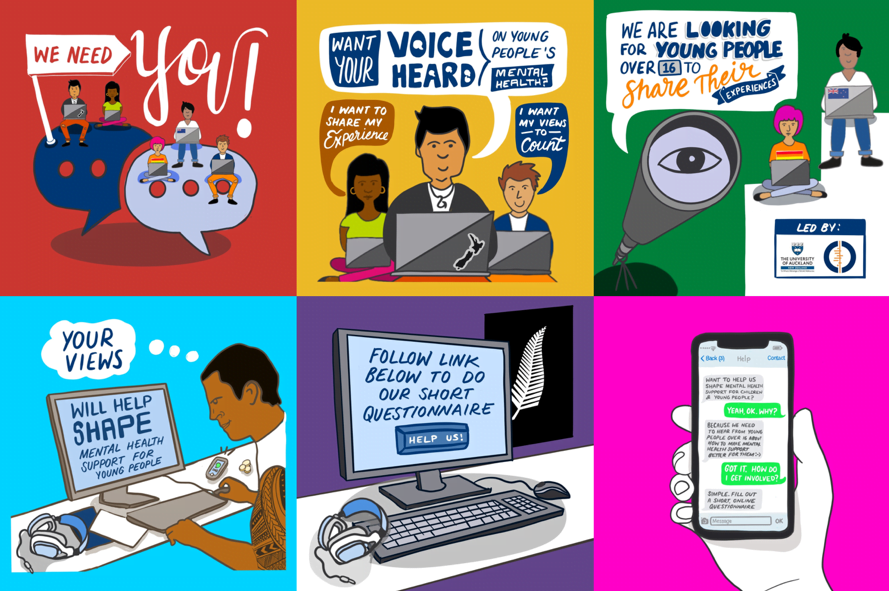
Practically trying to find the right images
Over the last 2 years our Group has been able to try some new ways to approach our use of images. We have tried to find better photos and we have worked with graphic designers to try to find alternative visual representations of mental health problems. At all times we have also aimed to meet Cochrane’s brand guidelines.
Laura Evans, Creative Director at Nifty Fox Creative, has worked with our Group on a variety of design projects over the last 18 months. She has revised and amended illustrations as part of our team efforts to get the images right.
Illustrating depression
This image was developed recently to form part of a one page information summary for a Cochrane Review about a treatment for depression. We had a sense of unease with using this image despite the fact it is such a beautiful illustration. We were concerned that people might view it as part of the extension of clichéd images of someone with depression being portrayed as isolated.
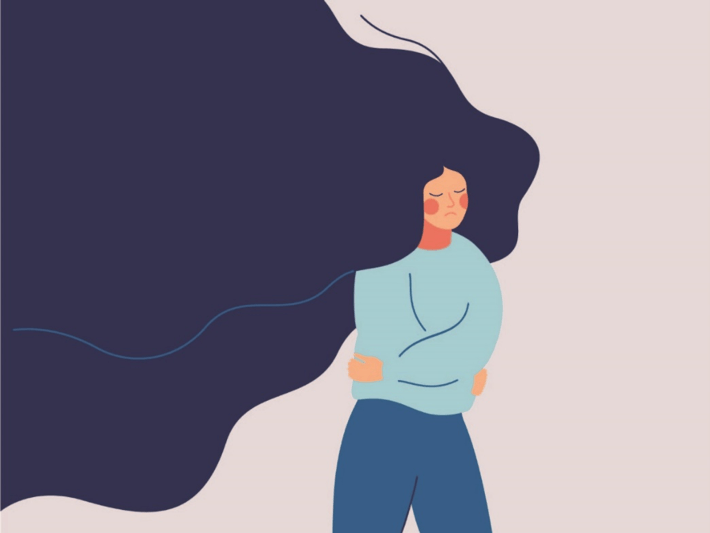
Laura’s reflections:”Illustrating depression in a way that resonates with but does not alienate those with lived experience was a particular challenge. I was keen to avoid the usual tropes of ‘crying people’ but also wanted to reflect the reality of depression – as a person with lived experience, depression can be a challenging, multi-faceted beast and I didn’t want to gloss over that. I initially felt like our ‘troubled figure’ was a good compromise between the two; standing and holding herself to reflect strength and self-care (rather than the usual hopeless hunched figure), whilst also expressing emotion to demonstrate the struggle that ‘pretending to be fine’ can be for those with depression. Whenever I’m illustrating something that I have had direct experience of, I always try to balance my own understanding of the image whilst also keeping the client’s goals in mind.”
Even though the image above had evolved from an earlier version (see below) we ended up taking the cautious decision not to use this as the lead image for our information summary.
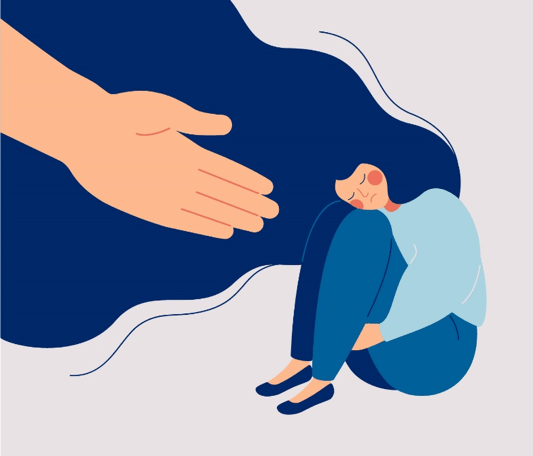
Illustrating post-traumatic stress disorder (PTSD)
Our Group publishes a number of Cochrane Reviews that focus on interventions for post-traumatic stress disorder (PTSD). In this early example of some work we did with Laura, we thought it might be helpful to try to visually represent some of the symptoms associated with PTSD to help illustrate the importance of the topic.
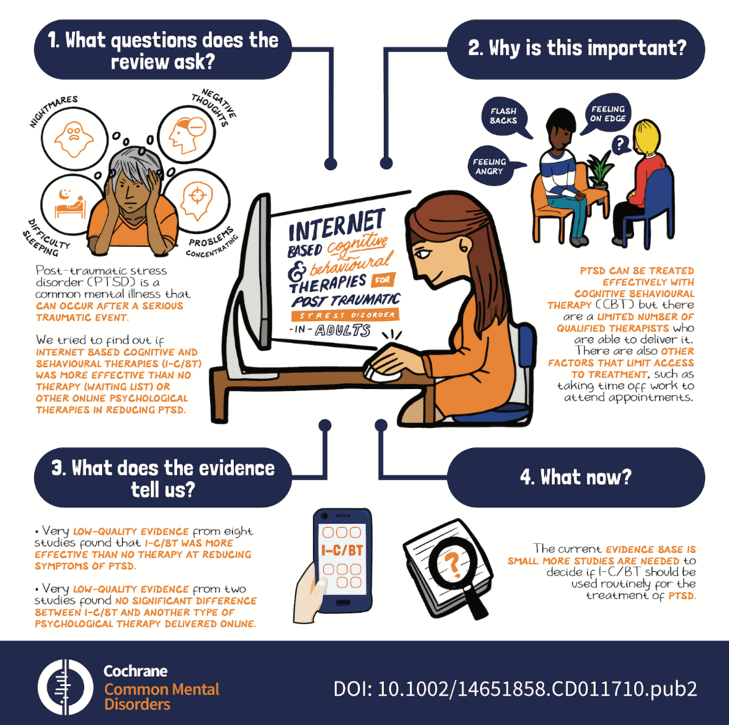
Laura reflections: “This was an incredibly difficult topic to illustrate – with obvious symptoms that have negative imagery attached to them, any illustration we went for would be judged differently by readers. To some extent, we had to accept that we wouldn’t get it totally right and treated it as an experimental piece to see what feedback we received. To mitigate the potentially negative tone, I used brighter colours and ‘friendly’ feeling lettering. Whilst not perfect, this was the best compromise between visual clarity and sensitive treatment of the subject matter.”
It isn’t always easy to represent symptoms and in retrospect there are things we might change about this image. Does the person look too stereotyped with head in hands? Does the picture of a ghost to depict nightmares trivialize the types of vivid nightmares those with PTSD can have, that can feel overwhelmingly real?
Illustrating acute mania with word art
Recently, word art is also something we have asked Laura to use. This idea came about when thinking how to visually represent acuteA health condition (or episodes of a health condition) that comes on quickly and is short-lived. mania and avoid stigma evoking images. It was also an opportunity to try using animated GIFs. We sought input from a person with lived experience of bipolar disorder during development who thought this was a fun way to present a sense of how the symptoms make you feel. We would like to do more user testing with this type of approach.
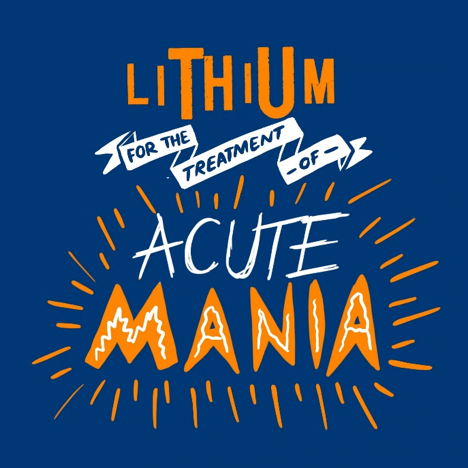
Laura reflections:”Using a more hand lettered, abstract approach to tackle controversial and serious mental health issues was both great fun and a more democratic way to engage with Cochrane’s consumers. Rather than using pictures to prescribe what people ‘should’ look like when living with acute mania, playing with lettering to suggest what it feels like to experience a wide array of challenging symptoms gave readers a chance to find their own experience within the image.”
Tell us what you think
The following three images were developed to support the dissemination of our reviews in partnership with graphic designer Annina Diston. I asked Annina to provide some insight into the thought behind the images for this blog:
“Having dealt with mental health issues personally, I have tried to express how these conditions can feel using illustrations. Utilising photographs of real people in the midst of a mental health crisis as a basis, I’ve overlaid very simple, but striking, evocative drawings, attempting to demonstrate the support others can provide.”
Despite multiple iterations and the input of others with lived experience in the design process the jury is still out on whether, as a broader editorial team, we collectively agree that these images are appropriate to use.
So, our last request as part of this blog is to tell us what you think. Join in the conversation on Twitter with @Cochrane_CCMD @NiftyFoxCreativ and @CochraneUK or leave a comment on the blog.
Editor’s note: In October 2020, Cochrane published Choosing images for sharing evidence: a guide, which is free to access. It was developed by Cochrane UK with the help of a global advisory group and other colleagues, including from Cochrane Common Mental Disorders, and contains examples and points to consider relating to depicting mental health topics.
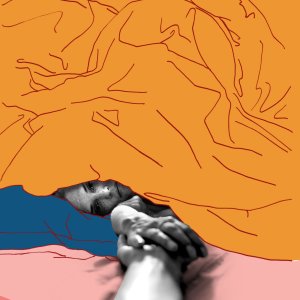


The production of the graphics (by Annina Diston and Laura Evans) included as examples in this blog and the patient and public involvement work that resulted in Karen Morley’s illustration were supported by the National Institute of Health Research (NIHR), via Cochrane Infrastructure funding to the Common Mental Disorders Cochrane Review Group.
The illustrations were developed by the designer and/or individuals involved and are not necessarily images endorsed by the Systematic ReviewsIn systematic reviews we search for and summarize studies that answer a specific research question (e.g. is paracetamol effective and safe for treating back pain?). The studies are identified, assessed, and summarized by using a systematic and predefined approach. They inform recommendations for healthcare and research. Programme, NIHR, NHS or the Department of Health and Social Care.
Freelance art director, graphic designer and model maker Annina Diston.
Annina is a creative director and graphic designer with over 20 years’ experience in creating striking, engaging memorable design for clients ranging from established global companies to regional start-ups and social enterprises. Find out more about Annina’s work.
Laura Evans, Creative Director, Nifty Fox Creative
Laura is a visual storyteller. With a decade of social research experience she helps organisations use hard working pictures to communicate ideas clearly, captivate audiences and demonstrate impact. Find out more about Laura’s work or follow Laura on Twitter @NiftyFoxCreativ.
Jessica Hendon has nothing to disclose.

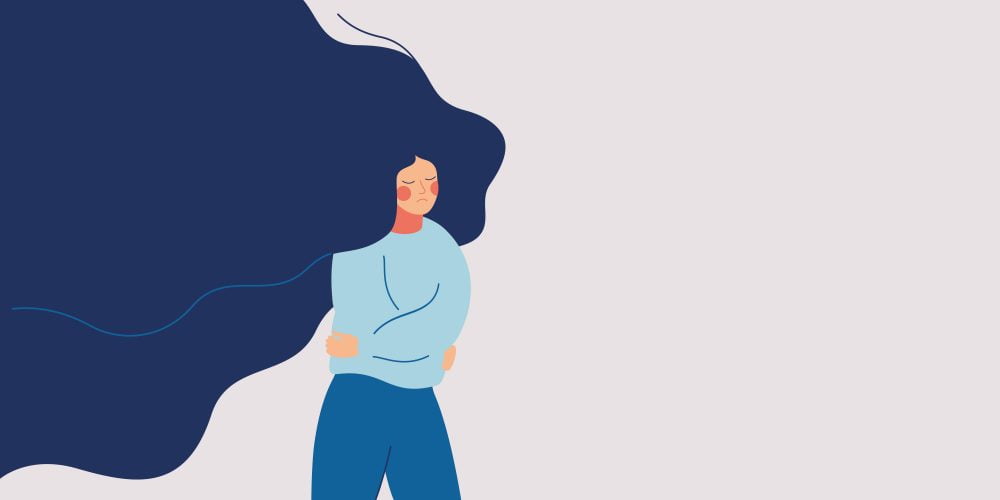
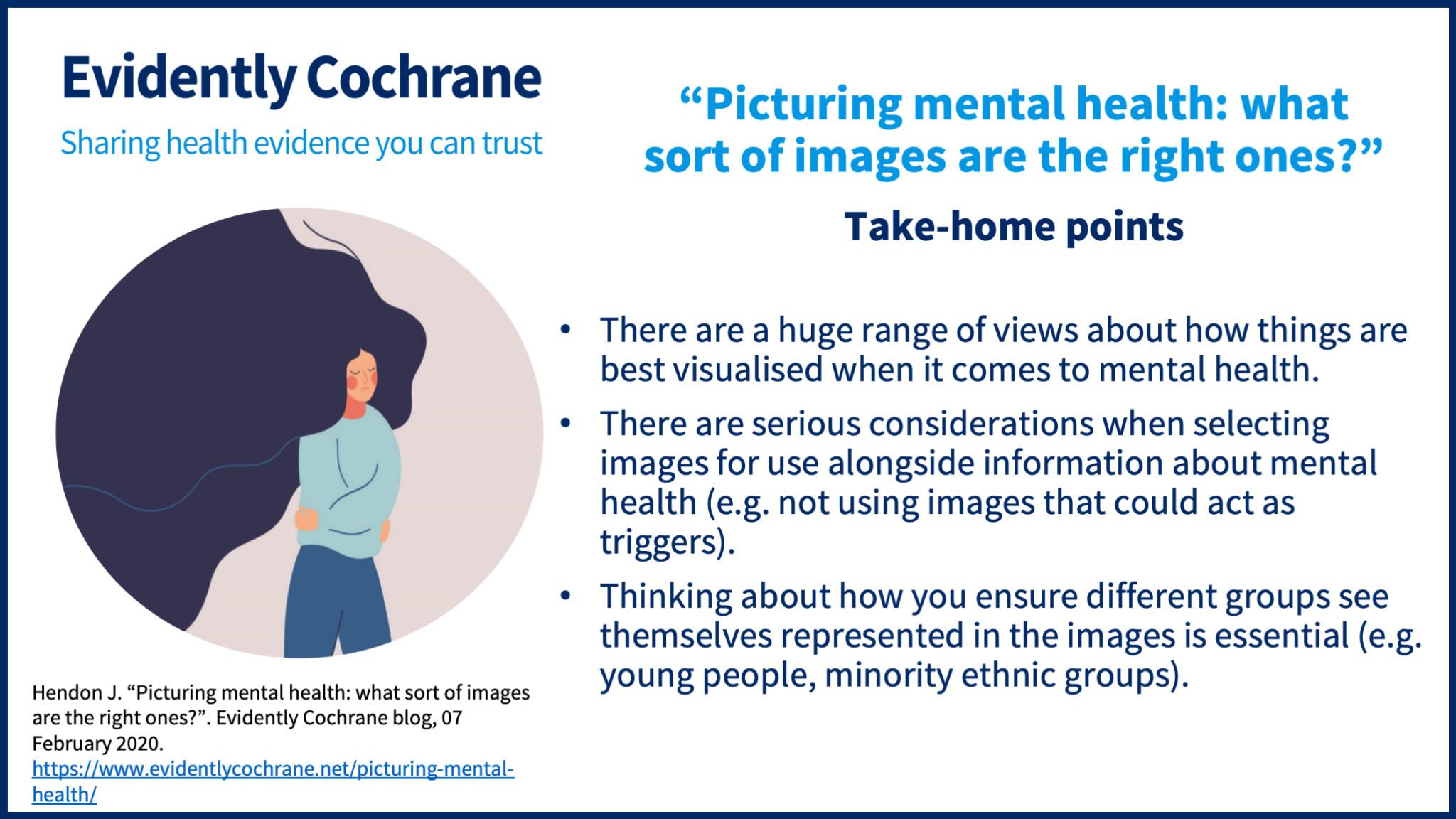

Loved reading your blog post on picturing mental health. I couldn’t agree more with the importance of visual representations in raising awareness and promoting understanding of mental health. It’s amazing how powerful images can be in conveying emotions and experiences that may be difficult to put into words. Keep up the great work in shedding light on this crucial topic! 😊
Are there any specific projects or studies you would recommend exploring in this context?